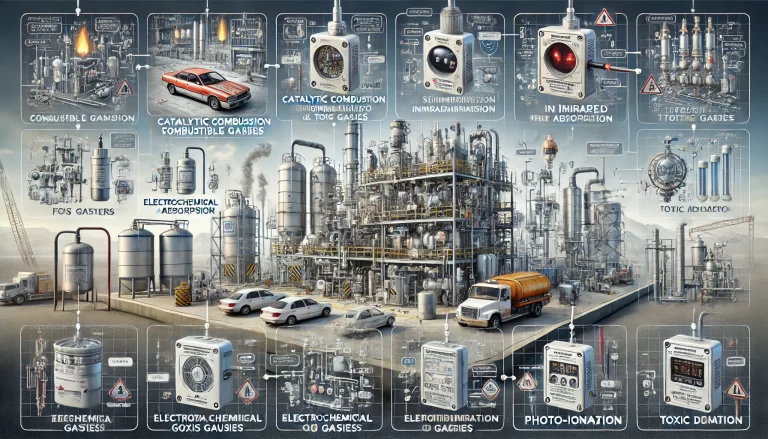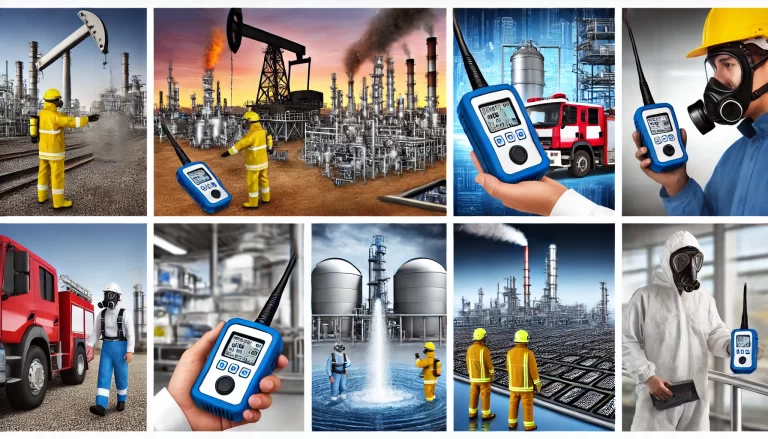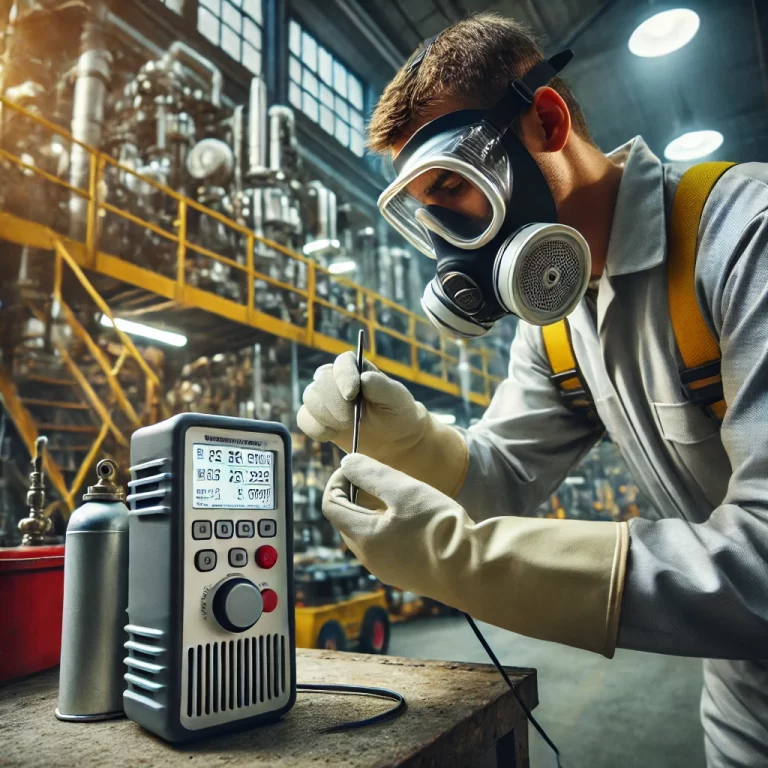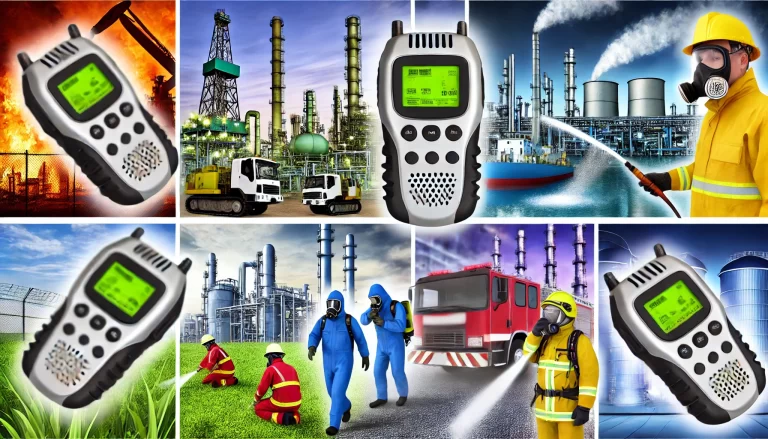Introduction
Hydrogen leak detectors are a critical part of any hydrogen safety system. However, the market is saturated with flashy claims such as “ultra-sensitive,” “high-precision,” and “lightning-fast.” These often mislead users during selection. Poor choices can result in frequent false alarms, higher maintenance costs, or even failure to alert during a real leak—compromising plant safety.
This article identifies five common mistakes in selecting hydrogen detectors and introduces a scientific three-dimensional selection framework based on:
Scenario Compatibility
Technical Maturity
Total Lifecycle Value

1. Blindly Pursuing Ultra-Low Alarm Thresholds: The Risk of Over-Sensitivity
Some users treat the lowest detection limit (e.g., 1 ppm) as the main selection criterion, assuming “lower equals safer.” But hydrogen’s light molecular weight makes minor leaks (like permeation through valve seals) quite common—and usually harmless. If the alarm threshold is too low, detectors will trigger frequent false alarms.
According to GB/T 50493-2019:
First-level alarm: 25% LEL (1% Vol or 10,000 ppm)
Second-level alarm: 50% LEL (2% Vol or 20,000 ppm)
International standards also base thresholds on the Lower Explosive Limit (LEL), not absolute ppm values.
Selection Tip: Choose detectors that support multi-level thresholds (e.g., early warning + alarm), and have signal filtering features to reduce environmental noise. Devices with self-calibration and drift compensation technologies can help maintain stable performance and reduce false positives.
2. Overemphasizing High Precision: What You Really Need Is Reliable Accuracy
Some devices claim lab-grade precision (±1% FS), but that level of detail often doesn’t survive in real industrial environments. Conditions like:
High temperatures (above 60°C)
High humidity (over 90% RH)
Electromagnetic interference from equipment like VFDs
—can severely affect performance. One field study found that a “±1% FS” detector degraded to ±8% FS after six months due to sensor drift.
What matters more is long-term stable accuracy. Select devices with:
Automatic temperature compensation
Built-in zero calibration
Proven accuracy over the full operating temperature range (e.g., -40°C to +70°C)
Resistance to cross-gas interference and environmental degradation
Devices meeting these criteria usually exhibit <2% long-term repeatability variation and maintain functional accuracy in harsh conditions.

3. Overvaluing Response Time: Speed Isn’t Everything
“Response time < 5 seconds” sounds impressive—but may not be appropriate for all applications. In open or semi-open environments (like hydrogen refueling stations), fast-responding sensors may be triggered by air turbulence or wind.
One station recorded 12 emergency shutdowns during strong winds, all false alarms—resulting in significant economic losses.
Selection Tip: Match response time to the risk level:
In confined, high-risk areas: detectors with 15–30 second response times allow filtering of short-term noise
In open areas: consider a hybrid detection system, combining:
Ultrasonic leak detection (fast, location-based)
Gas concentration detection (for confirmation)
Advanced ultrasonic sensors now use AI-based signal processing to distinguish real leaks from noise, offering coverage up to 28 meters without manual calibration.

4. Falling for Low Prices: Hidden Costs of Cheap Devices
Inexpensive detectors (under $700) often appear cost-effective but can incur high total lifecycle costs due to:
Short sensor life (1–2 years for basic MOS sensors)
Poor resistance to moisture, corrosion, and interference
Frequent maintenance and recalibration needs
Downtime losses from false alarms or failures
Total Cost of Ownership (TCO) =
Initial Purchase + (Annual Calibration + Maintenance Costs) × Service Life + Downtime Impact
Selection Tip: Choose devices with:
Sensor lifespan of 3–5 years (electrochemical) or >10 years (infrared)
IP66/67 or better enclosure rating
Support for remote diagnostics to reduce on-site maintenance
Such devices may cost more upfront but offer up to 40% savings over five years through reduced servicing and longer life.

5. Underestimating Stability: The Hidden Risk in Harsh Environments
Hydrogen applications often involve:
Cryogenic temperatures (e.g., -253°C in liquid hydrogen storage)
Strong vibrations (e.g., near compressors)
Corrosive gases (e.g., electrolyzers)
Devices not designed for these environments may suffer from contact failures, signal drift, or sensor poisoning. One facility reported a 10-minute delay in leak detection due to sensor vibration faults—nearly causing a serious incident.
Selection Tip:
Use explosion-proof enclosures and vibration-tested designs
Look for electronics coated with conformal protection against salt, mold, or chemical vapors
Ensure wide temperature operation (e.g., -40°C to +70°C)
Favor systems with automatic self-check, fault alerts, and redundancy (e.g., dual-channel systems, auto-calibration, real-time sensor diagnostics)

Conclusion: Apply the “Three-Dimensional Rule” for Smart Selection
To make the right hydrogen gas detector choice, assess options using this framework:
1. Scenario Compatibility
Evaluate environment (indoor/outdoor, fixed/mobile), risk level (e.g., confined area vs. general workspace), and zone classification (Zone 1/Class I Div 1, cryogenic, high-dust, etc.).
2. Technical Maturity
Look beyond marketing claims—check sensor technology, certifications (SIL2, ATEX, IECEx), and anti-interference capabilities.
3. Lifecycle Value
Compare 5-year operating costs, including sensor replacement cycles, calibration frequency, and the financial impact of false alarms or downtime.
